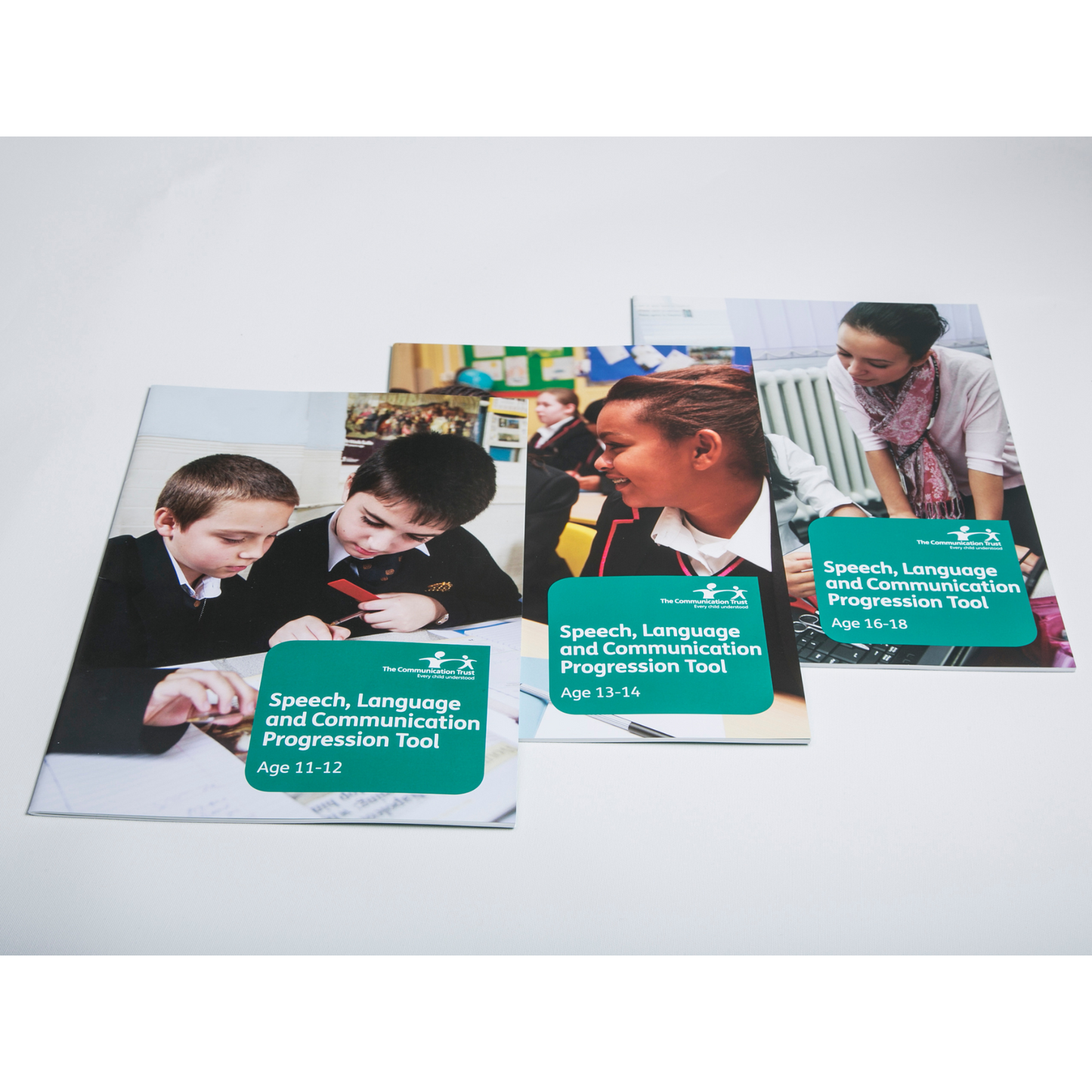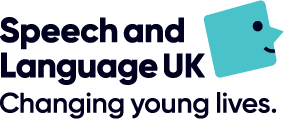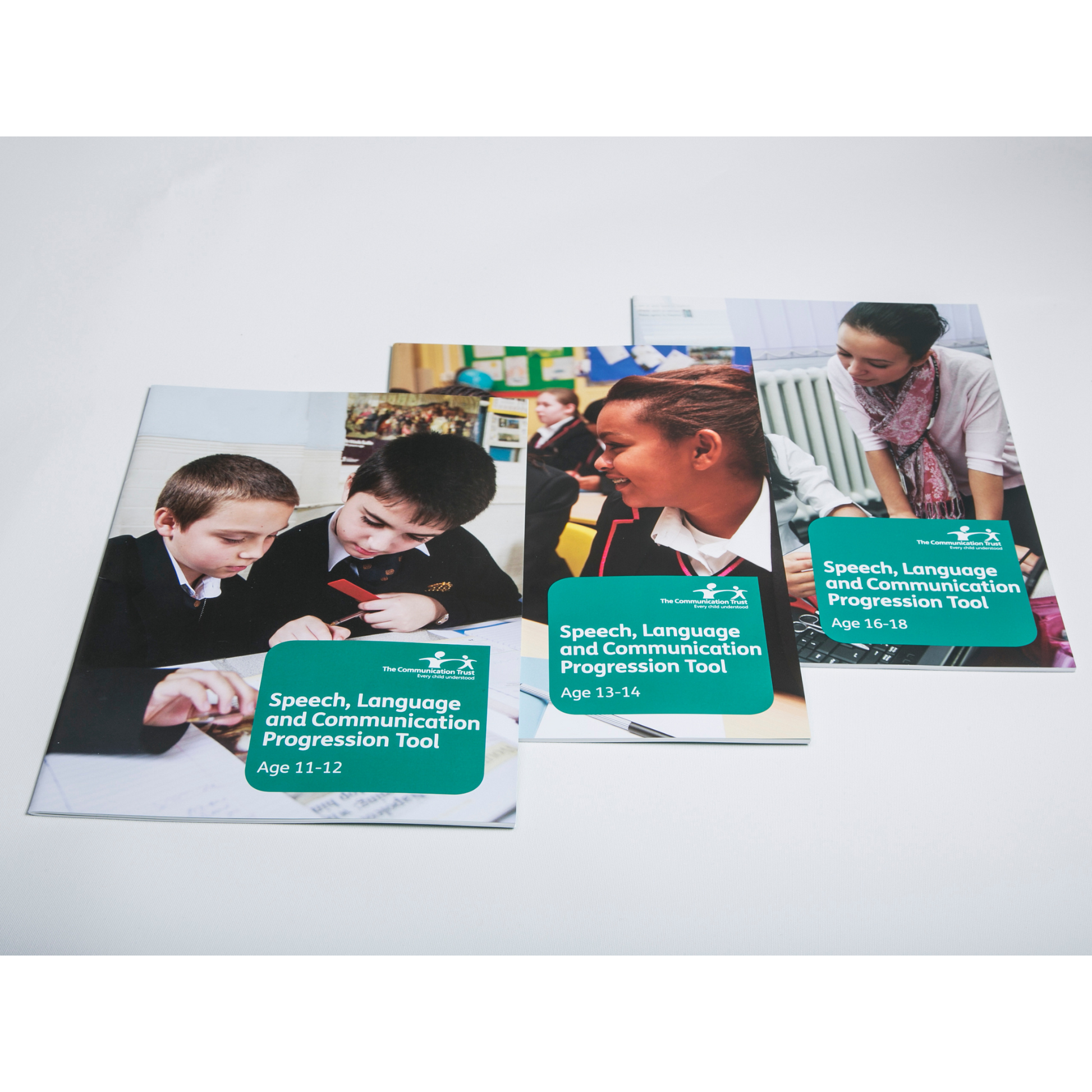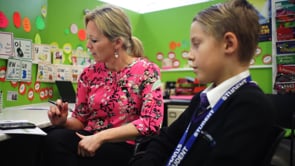Progression Tools from The Communication Trust for Secondary Years Set
Progression Tools from The Communication Trust for Secondary Years Set
Couldn't load pickup availability
- Age range: 11 - 18 years
- Training required: No
This set of 3 Speech, Language, and Communication Progression Tools covers ages 11-18, supporting staff in identifying young people who may have speech and language challenges.
Contents
Contents
- Progression tools 11 - 12 years
- Progression tools 13 - 14 years
- Progression Tools 16 - 18 years
Resources
Resources
Further Information
What are the Progression Tools?
We know some young people can have speech, language, and communication needs (SLCN) that can impact on their ability to listen, understand and express themselves. However, it's not always easy to judge how well a young person is progressing with these skills; young people may have good skills in one area whilst struggling in others.
In secondary schools, partly because of the more subtle changes we expect at this stage, it's even easier to mistake a lack of progress with speech, language, and communication skills for something else. Young people with SLCN may be quiet, appear to lack confidence, struggle to make friends, or seem confused or disengaged in lessons. Alternatively, their difficulties might be seen in other ways, such as poor behaviour or difficulties with literacy.
The secondary Progression Tools aim to support teaching staff to identify young people who may be struggling to develop their speech, language, and communication skills. They can also be used to track the progression of these skills over time or following interventions.
These Tools are based on theoretical information on typical language development and also the Universally Speaking booklets. They aim to provide a relatively quick way of determining where young people are against where they should be for their age and provide more information about how these vital skills are progressing.
The secondary Tools are not diagnostic tools and do not in any way replace the detailed speech, language, and communication assessment by a speech and language therapist that some young people will need. However, they will give you information to help decide whether young people would benefit from a targeted intervention or whether they need specialist assessment and support.
Click here to download a 'Top Tips' sheet to help you use the Secondary Progression Tools.
How were the Tools developed?
The secondary Progression Tools were developed by specialists in speech, language and communication in collaboration with mainstream teachers, teaching assistants, SENCOs and school leadership teams. They have been tested on a large number of mainstream schools, on a range of young people. The feedback we have received has been invaluable in shaping the final suite of Tools.
The ages chosen for the Tools are the ones where research has given us the clearest information about expected milestones. There are expected variations in the way in which language develops, though the Tools represent what all students of this age should be able to do according to typical language norms.
Students become more self-aware and develop more sophisticated language from age 16 to 18 as they become young adults. At 15, students are just on the cusp of this development, though will have mastered the skills expected in the 13/14 Tool. For this reason, there isn't a specific Tool for 15-year-olds.
If using Tools with 15-year-olds, they should score completely in the green band on the 13/14 Tool, demonstrating this mastery - this is a good way to check they are at least at this level. If you want more detailed information about what they can or can't do, the older Tool should give some insight as they should gain some success with this, giving an idea of their relative strengths and needs.
Who should use them?
The secondary Tools are for non-speech and language specialists who regularly work with young people in a range of secondary settings, such as teachers and teaching assistants. We recommend careful reading of the instructions and familiarisation with the Tool before using it directly with young people. Secondary aged students will benefit from an explanation of why this Tool is being used with them.
When should I use them?
Some schools have used the Progression Tools with whole class groups to help them understand the level of speech, language and communication skills across year groups. Others have trialled them with specific groups of young people who have either gone on to have a targeted intervention or have been referred to speech and language therapy.
On each young person's scoring form, there is space for you to repeat the tool at a later date (repeating the tool is optional and can be used to monitor progress or follow an intervention). We would recommend waiting at least a term before repeating the tool with the same young person.
What is included?
There are 3 Progression Tools in this pack, which highlight children and young people's language skills at the following key ages of development: 11-12, 13-14, and 16-18 in secondary school. They are based on research with clear information about expected milestones.
Each secondary Tool contains a colour reference booklet with instructions on how to use it, questions to ask the young people, guidance on how to observe their behaviour and methods to track their results. Each Tool also contains additional black-and-white versions of the question and observation sections, as well as the scoring tables. You can photocopy these additional sheets for as many young people as you wish to use the Tool with. You will use these sheets to write down and score their answers, as well as to input their results.
*Please note that for the secondary Tools, you will also need a recording device, as for certain questions where the student might give a lengthy answer it is strongly recommended that you record what the student says and then listen back and write it into the answer box later.



